Happy National Zookeeper Week 2025
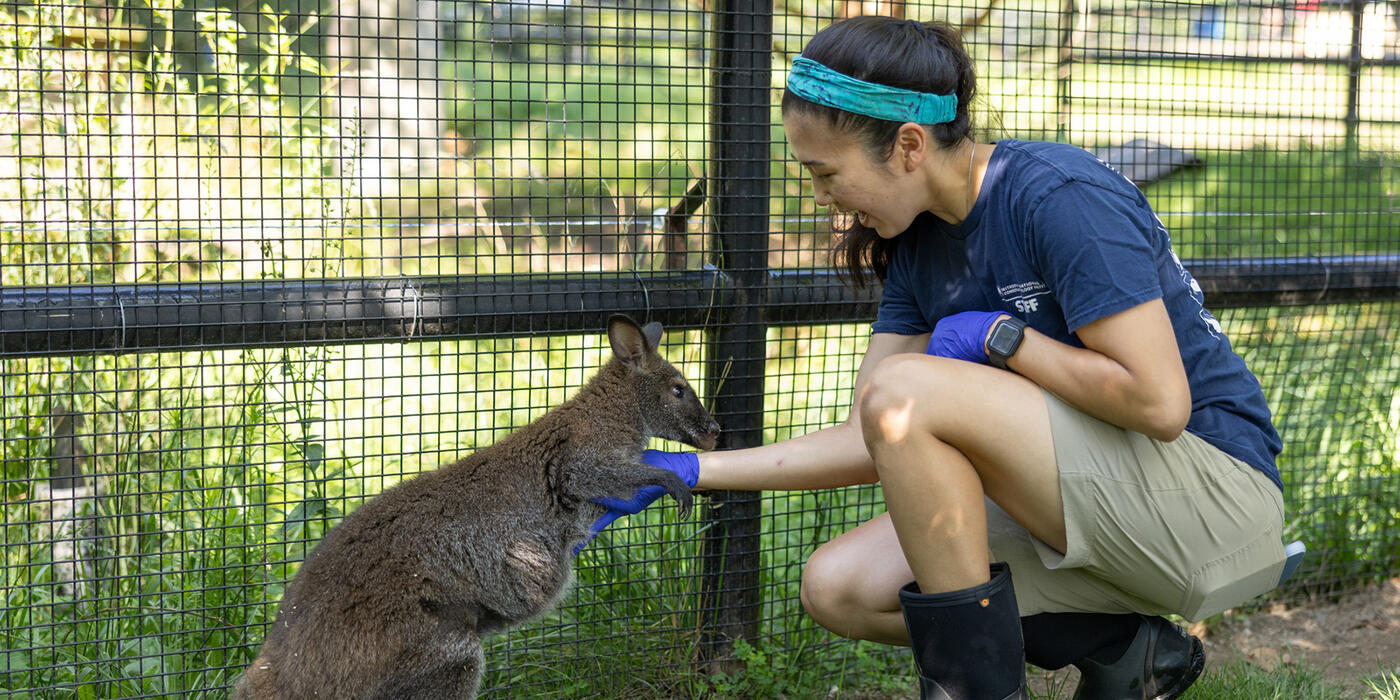
Happy National Zookeeper Week! Join us in celebrating the dedicated professionals who care for animal ambassadors at the Smithsonian’s National Zoo and Conservation Biology Institute. Keepers are caretakers—and so much more. They research, study and share what they learn to build our collective knowledge. They tell our animals’ stories and inspire curiosity about the natural world. Most importantly, they help visitors forge emotional connections with our animals, bridging the gap between seeing an animal and wanting to save it. Get to know our amazing animal care team in the stories below!
Amazonia
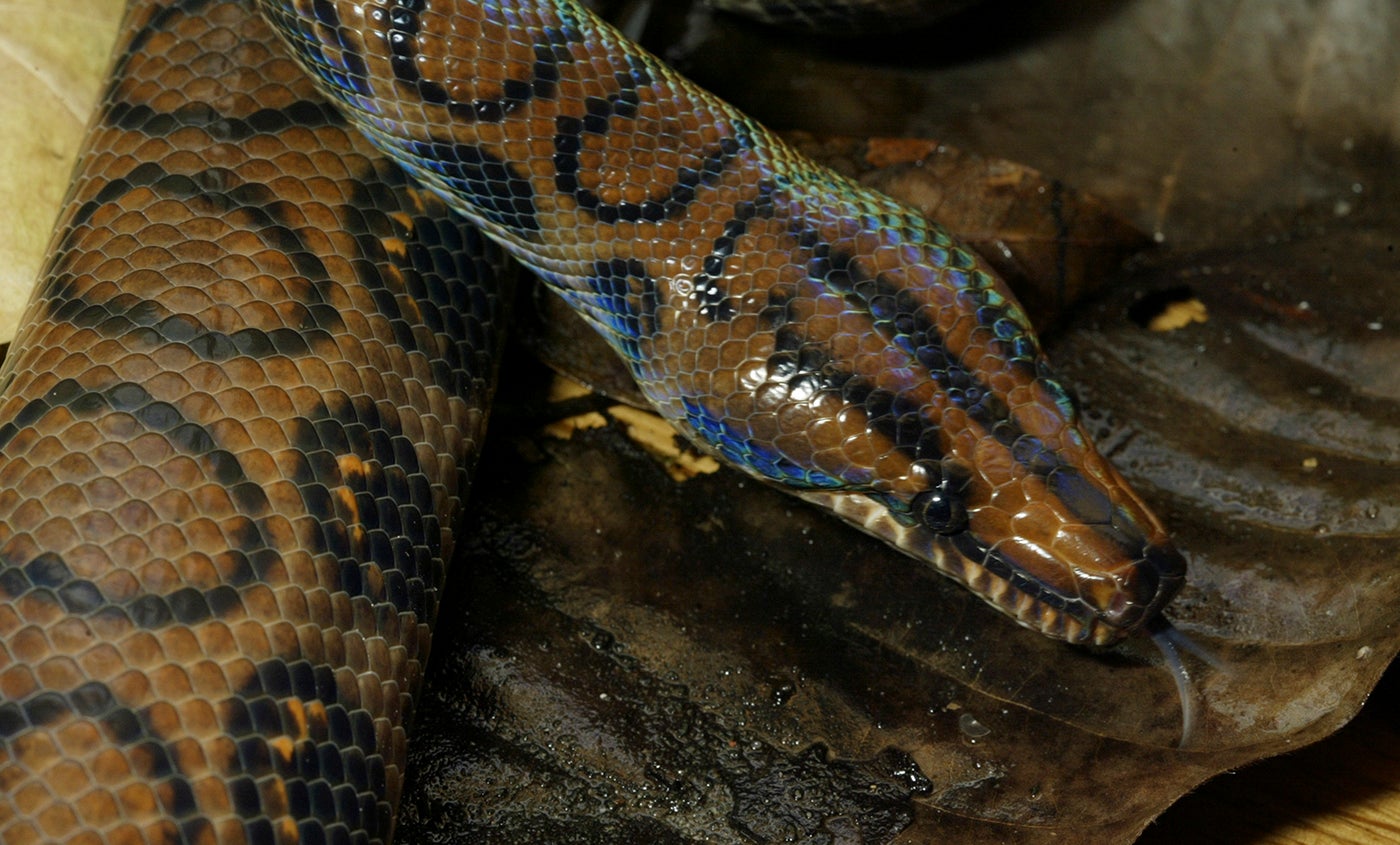
A Brazilian rainbow boa. Credit: Jessie Cohen/Smithsonian
“During National Zookeeper Week, we’re proud to celebrate Mike Kirby, a dedicated keeper whose passion and work ethic have made a lasting impact on Amazonia. Over the past year, Mike has provided exceptional care for the entire amphibian and reptile collection, while also taking a leading role in maintaining and enhancing the rainforest habitat.
“His commitment to collaboration shines through his cross-departmental work to revitalize plantings and improve the overall look and feel of the exhibit. Recently, Mike went above and beyond by designing and creating a custom, animal-safe water feature for the new rainbow boa enclosure, blending creativity and artistry with animal welfare.
“Mike’s dedication to both the animals and his team exemplifies the very best of what it means to be a zookeeper.” – Rebecca Sturniolo, Curator of American Trail and Amazonia
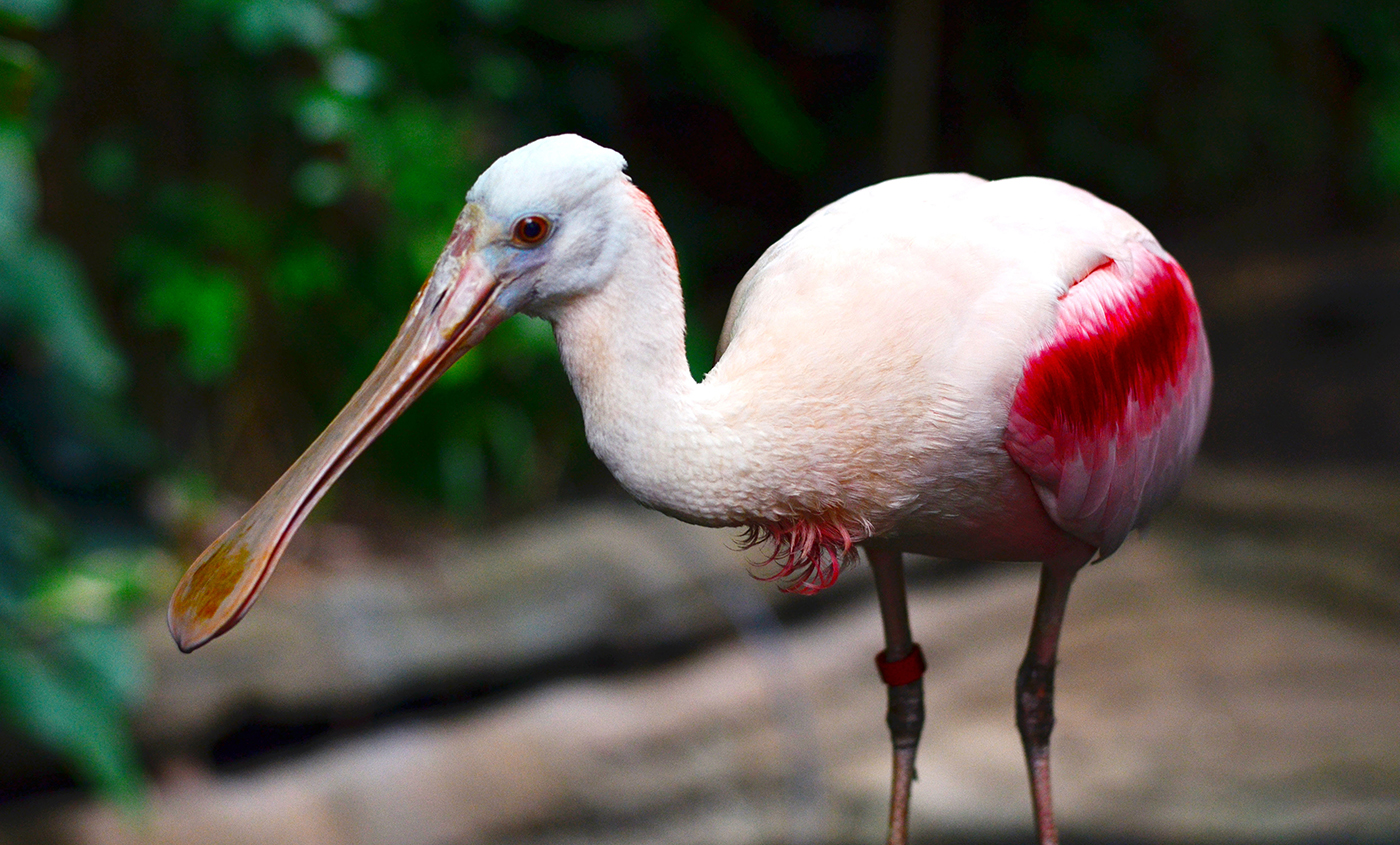
A roseate spoonbill in Amazonia's rainforest habitat. Credit: Skip Brown/Smithsonian
“This National Zookeeper Week, we’re celebrating the incredible Amazonia Team for their dedication, collaboration and innovation over the past year. Whether coordinating complex preventative health exams for the multitudes of fish species (which requires careful planning, detailed preparation, precise water quality matching and teamwork), or moving literal tons of soil to support the rainforest’s growth, this team continues to go above and beyond.
“They’ve also taken exciting steps to advance animal care. They work together on advanced training for the free-flight birds in the rainforest and share ideas to design more enriching and naturalistic exhibits. Through their creativity and commitment, the Amazonia Team is pushing the boundaries of animal welfare and setting an inspiring example of what can be achieved through teamwork.” – Rebecca Sturniolo, Curator of American Trail and Amazonia
American Trail
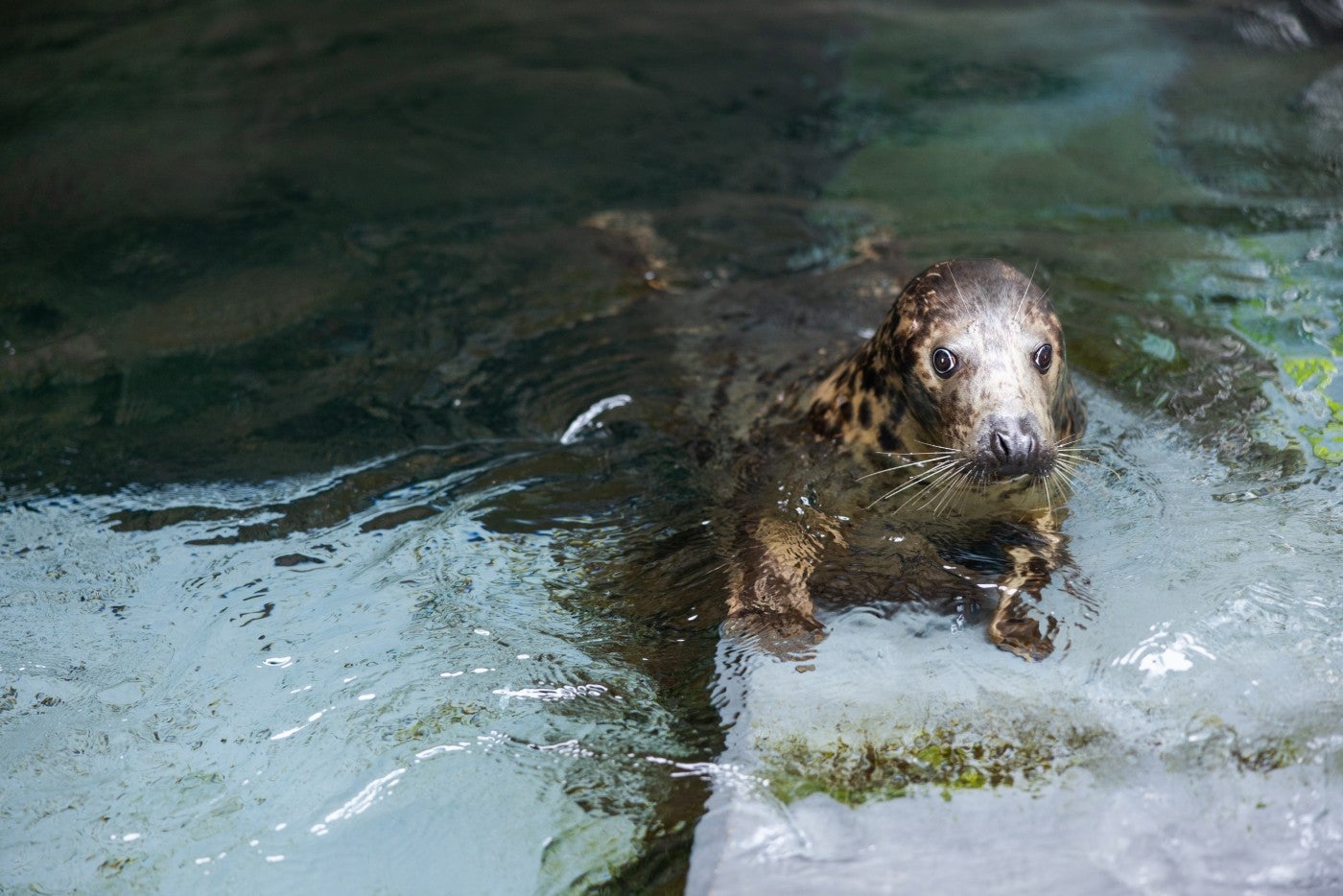
Gray seal Jo-Jo. Credit: Roshan Patel/Smithsonian
“This past year, American Trail keepers have spent countless hours caring for and adjusting training for our juvenile grey seal, Jo-Jo. She was rescued near Atlantic City, New Jersey, due to being born with bilateral cataracts and sustaining significant injury to her lower jaw.
“Their first challenge was learning how to transition a rescued seal to life under human care, and how to communicate successfully with Jo-Jo using tactile and auditory cues. After undergoing successful cataract surgery last summer, Jo-Jo had to adjust to life with restored vision.
“Our American Trail keepers were right there with Jo-Jo every step of the way. They collaborated with our veterinary staff and ophthalmologists to adapt her training and care, helping her navigate this big change with confidence.
“Jo-Jo’s training has been carefully tailored to her needs. Her training progress and improved welfare are a testament to her keepers’ passion, creativity, and unwavering commitment.” – Rebecca Sturniolo, Curator of American Trail and Amazonia
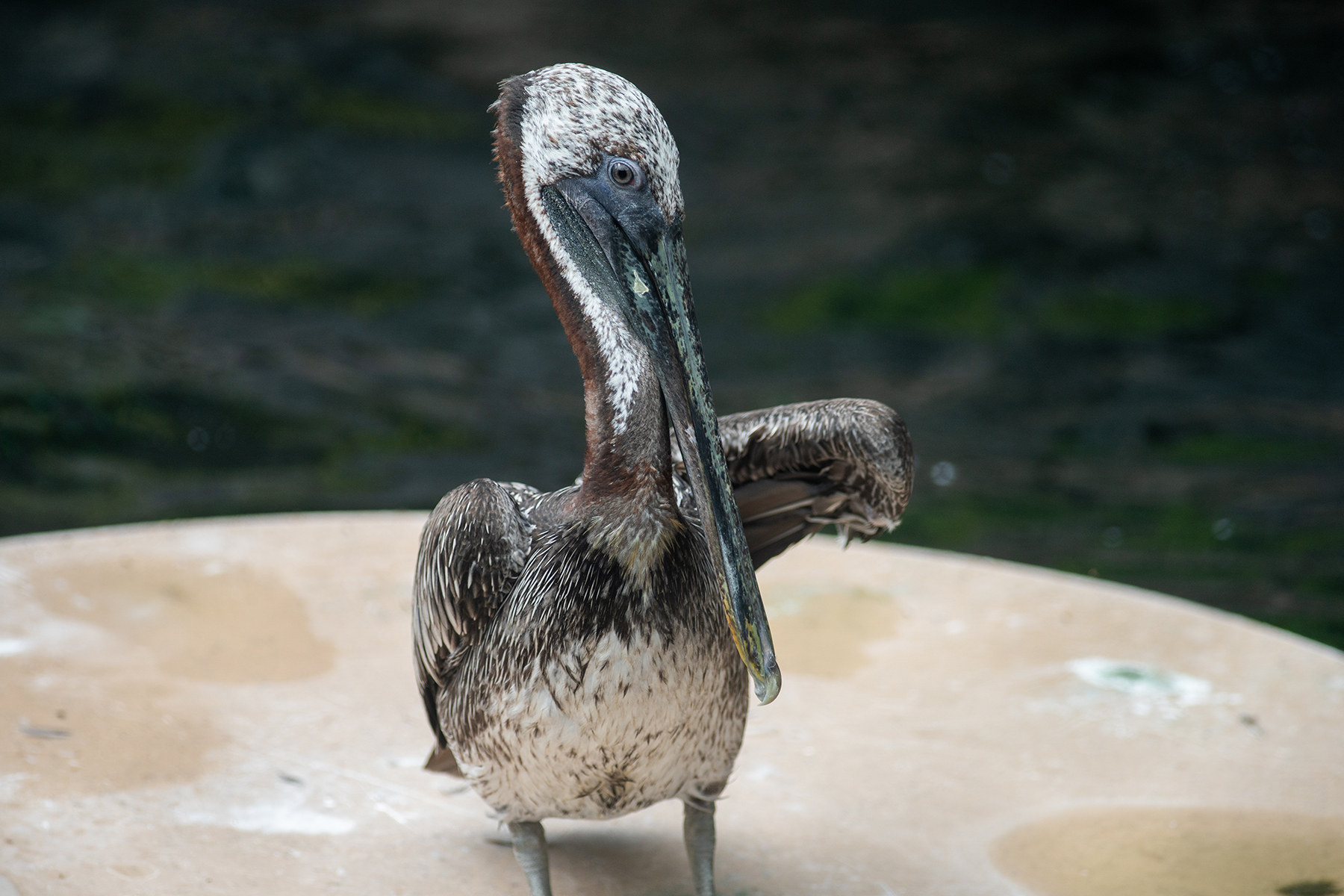
A brown pelican in its habitat at American Trail. Credit: Skip Brown/Smithsonian
“Because American Trail features species native to North America, we are in a unique position to provide lifelong homes for animals deemed non-releasable due to injury, illness, or other circumstance that prevent them from surviving in the wild. This means that we may become a new home for animals at different life stages, from different parts of the country, and at any time throughout the year. This was the case with Eugene, Pippin, and Frankie, our three brown pelicans.
“The first pelican to arrive was Eugene, who was believed to be approximately one year old, from the east coast of Florida. Seven months later, we had the opportunity to rescue Pippin, estimated to be younger than three years old from the panhandle of Florida. Six months later, juvenile brown pelican Frankie, rescued from North Carolina, joined the pelican squadron.
“Introducing these birds to one another required time, care, and adaptability, especially during the winter months, when colder temperatures limited access to outdoor spaces. Keepers closely monitored behavior and adjusted pairings daily to ensure each pelican’s comfort. The team also managed multiple indoor spaces and trained each bird to voluntarily walk with a keeper to their overnight housing.
“This training helped reduce stress and allowed the birds to adjust gradually. Thanks to the keepers’ patience, flexibility, and commitment to individualized care, Eugene, Pippin, and Frankie now live together comfortably and share their space with ease!” – Rebecca Sturniolo, Curator of American Trail and Amazonia
Asia Trail
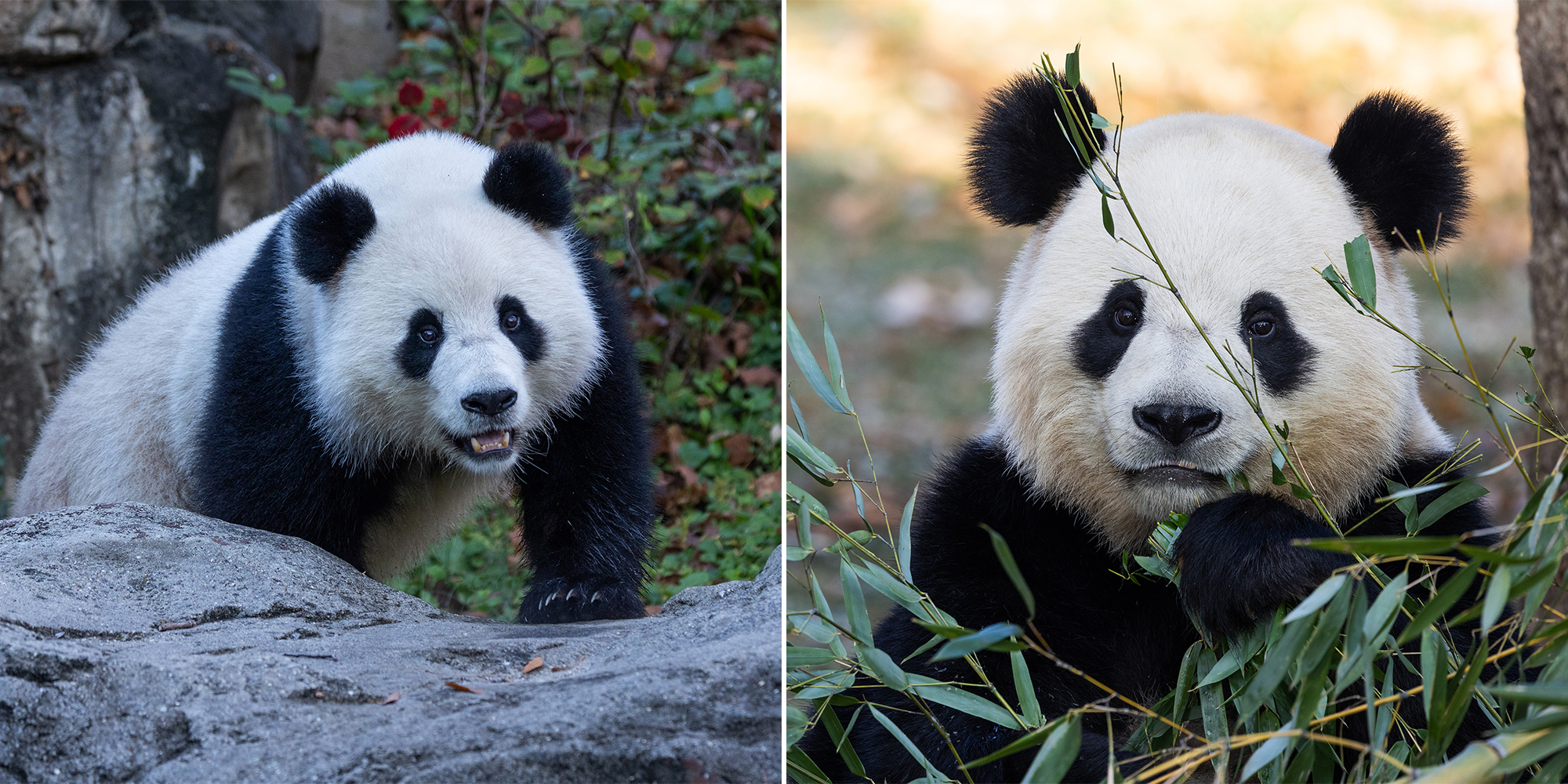
Giant pandas Qing Bao (left) and Bao Li. Credit: Roshan Patel/Smithsonian
“Before giant pandas Bao Li and Qing Bao arrived in October, Asia Trail keepers Mariel Lally and Trish Jarvis traveled to China to work with them. They cared for the bears during the flight. After their arrival, Bao Li and Qing Bao had to get used to a new care team, new habitats, new sounds (including trumpeting elephants) and a new time zone!
“During our routine quarantine period, Mariel and Trish collaborated with our veterinary and nutrition teams—as well as our Chinese colleagues—to provide the very best care for Bao Li and Qing Bao. They trained Bao Li and Qing Bao on basic husbandry behaviors that help us with their day-to-day care and made sure they were comfortable in their new habitats. And, they worked with our Communications team to ensure people around the world could stay connected with the pandas, even while they were off exhibit and acclimating to their new home.
“Thanks to the dedication and hard work of Mariel and Trish, the pandas are thriving, and their public debut in January was a huge success.” – Michael Brown-Palsgrove, Curator of Asia Trail and Giant Pandas
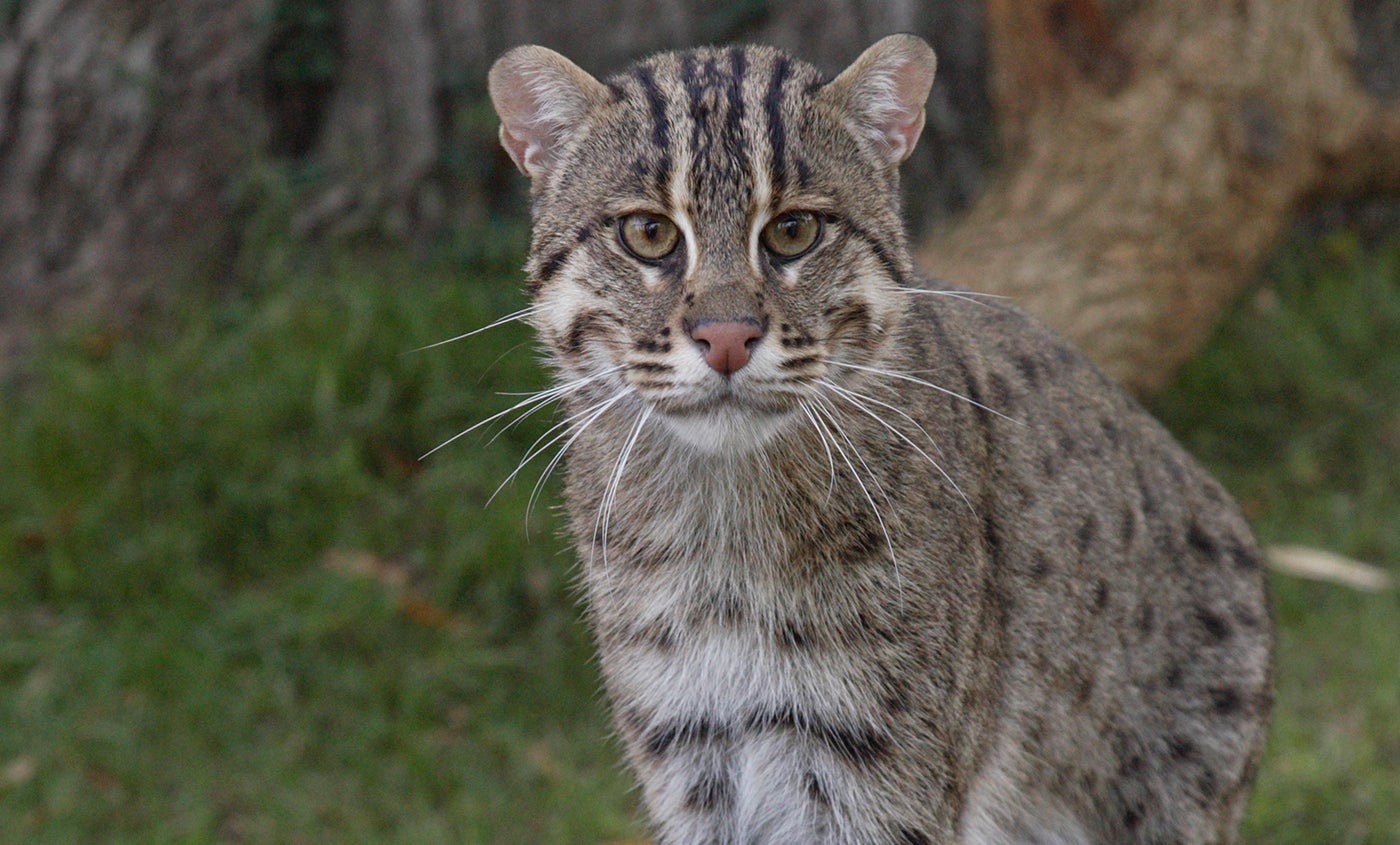
A fishing cat explores its habitat on Asia Trail. Credit: Jessie Cohen/Smithsonian
“During a routine health exam, one of our fishing cats, Angler, was found to have elevated liver enzymes. When Angler started treatment, follow-up blood samples were needed to track his health. Asia Trail keeper Paul Brandenburger trained our fishing cat to voluntarily participate in blood draws. This meant we could monitor Angler’s health without the need to put him under anesthesia. Over the course of many months, he worked to desensitize Angler to the procedure and offered his favorite food, goat’s milk, as a reward for participating. Thanks to Paul’s patience and perseverance, he and our veterinary team were able to successfully collect a blood sample in November—which showed the treatment was working.” – Michael Brown-Palsgrove, Curator of Asia Trail and Giant Pandas
Bird House
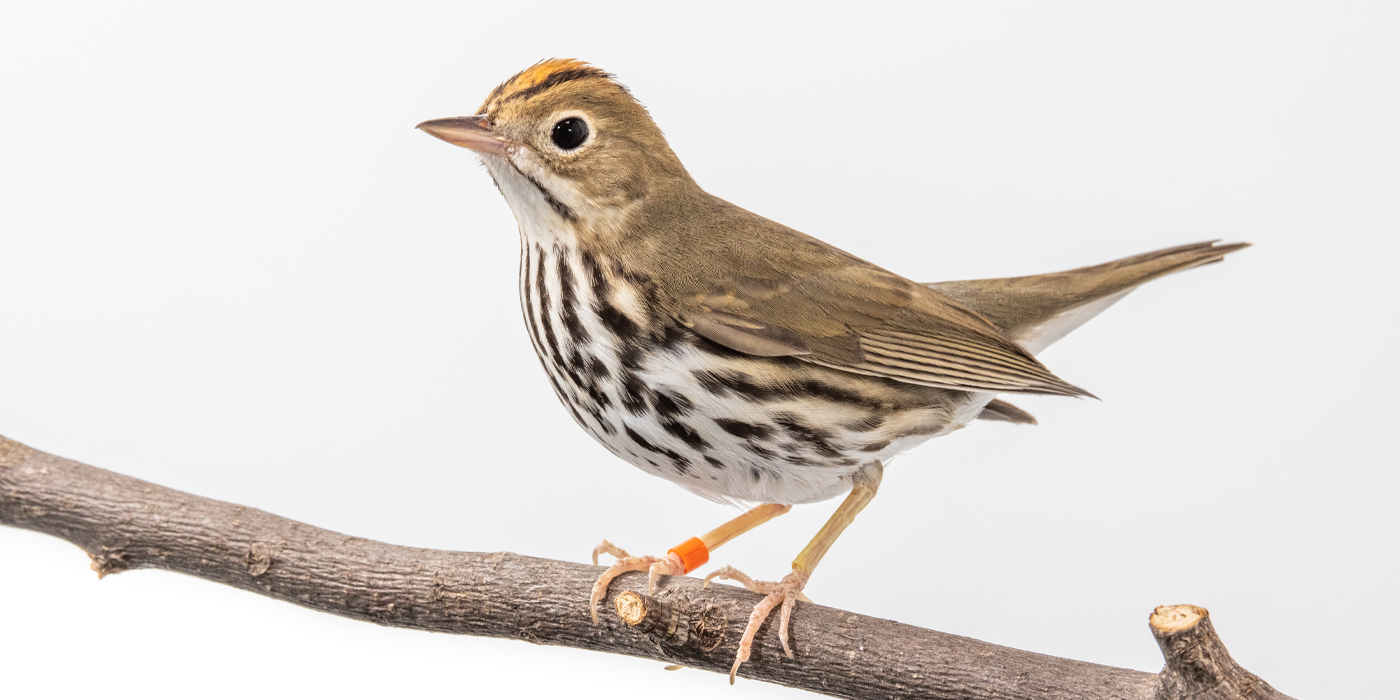
An ovenbird perched on a tree branch. Credit: Roshan Patel/Smithsonian
“In 2024, our animal care team completed their first full year in the newly reopened Bird House. With deep dedication and skill, the team made significant strides in animal care, breeding, exhibit operations and connecting with visitors. They successfully managed more than 100 hatchings, including the first-ever successful rearing of the ovenbird in human care!
“We are the only facility in the world breeding common yellowthroats, orchard orioles and numerous other North American songbirds. Among other highlights, the team achieved the first canvasback hatch at the Zoo since the early 1990s. And, we successfully relocated the flamingo flock to a temporary habitat as part of our proactive avian influenza mitigation efforts.
“Beyond these achievements, what sets this team apart is their unwavering commitment to excellence—day in and day out. They’ve redefined what’s possible when it comes to breeding North American songbirds, all while delivering meaningful experiences to guests and sharing their expertise across the profession. Their work is marked by dedication, creativity, collaboration and a genuine passion—for the birds, for one another, and for the mission of the Smithsonian’s National Zoo and Conservation Biology Institute: we save species.” – Sara Hallager, Curator of Birds
Elephant Trails
“The Zoo is committed to learning everything we can about elephant endotheliotropic herpesvirus (EEHV), including why some elephants succumb to it while others survive. Luckily, we have a comprehensive surveillance, treatment and response plan—and it’s all possible thanks to our dedicated keeper team!
“We use three methods to regularly monitor the members of our elephant herd: behavior watches, trunk washes and blood draws. Because keepers work one-on-one with our elephants every day, they know their sleeping, eating, playing, exploring and socializing patterns. When we see a marked change in these behaviors, we track them closely to determine if it is a one-off or if there’s another reason for this change in demeanor.
“During a trunk wash, we ask an elephant to present their trunk, inject saline into a nostril, then ask the elephant to blow the solution into a sterile bag. We send the sample to our lab, where it is analyzed for any viral shedding.
“EEHV can quickly become symptomatic. There is a very short window of time to successfully begin treatment. One of the most effective treatments is a blood transfusion from other elephants. We want to have a blood supply ready to go if one of our elephants becomes ill. Luckily, keepers have trained two of our elephants, Spike and Swarna, to voluntarily participate in large-volume blood collection as donors. Down the road, we aim to have enough for future calves, as well as a supply we could donate to other zoos in need.”—Robbie Clark, Assistant Curator of Elephant Trails
Great Cats
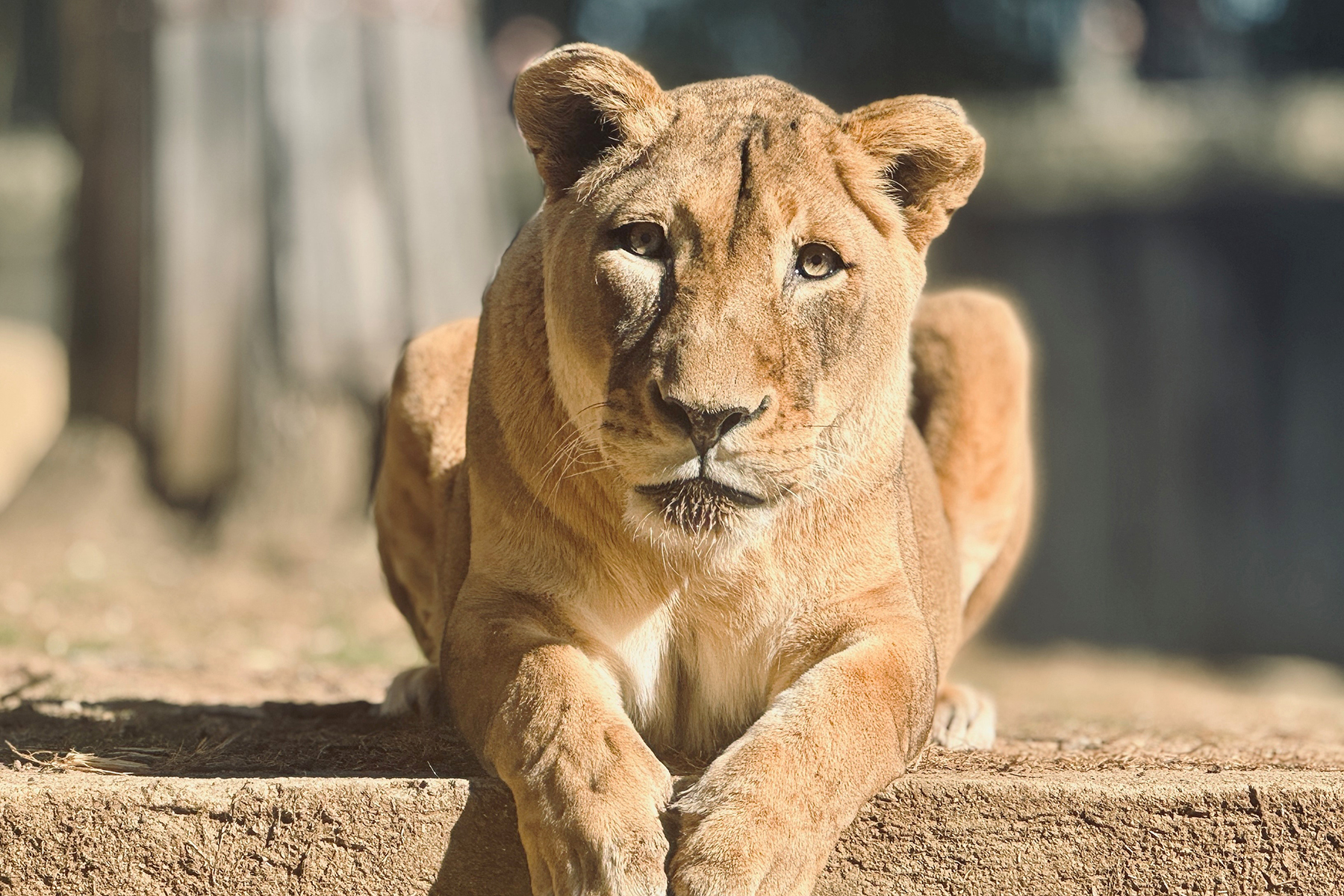
African lion Shera at the Great Cats habitat. Credit: Leigh Pitsko/Smithsonian
“At 20 years old, our lioness Shera is considered geriatric and experiences a few age-related aches and pains. To put her age in perspective: 20 in lion years is about the equivalent of 96 in human years! To ensure she maintains a good quality of life, our keeper team—Ish Ganame, Dell Guglielmo, Katy Juliano, Sydney Mayers and Charlie Shaw—provide Shera with a big, fluffy hay bed daily, her favorite drink of blood-flavored water for extra hydration and routine check-ins from the veterinary technicians to monitor her bloodwork and overall health.
“Shera laps up all of the attention, as it usually comes with snacks! Our team members have built great relationships with Shera, which have been essential to keep close tabs on her health as she progresses through her Golden Years.”—Craig Saffoe (Curator) and Leigh Pitsko (Assistant Curator) of Great Cats, Andean Bears and Claws & Paws Pathway
Kids' Farm
Alpaca half-brothers Rainstorm (left) and Coffee Cup frolic in the Kids' Farm yard. Credit: Nikki Maticic/Smithsonian
“This has been a year of change for the Kids' Farm! The team has trained three new staff members, welcomed two new alpacas (Rainstorm and Coffee Cup) and facilitated changes to the chicken habitat to protect them from avian influenza. Through it all, the team has been upbeat and ready to face each challenge head on. No day is ever the same at any zoo, and the Kids' Farm staff are up for anything!”—Kenton Kerns, Curator of Kids’ Farm and Small Mammal House
Nutrition Sciences
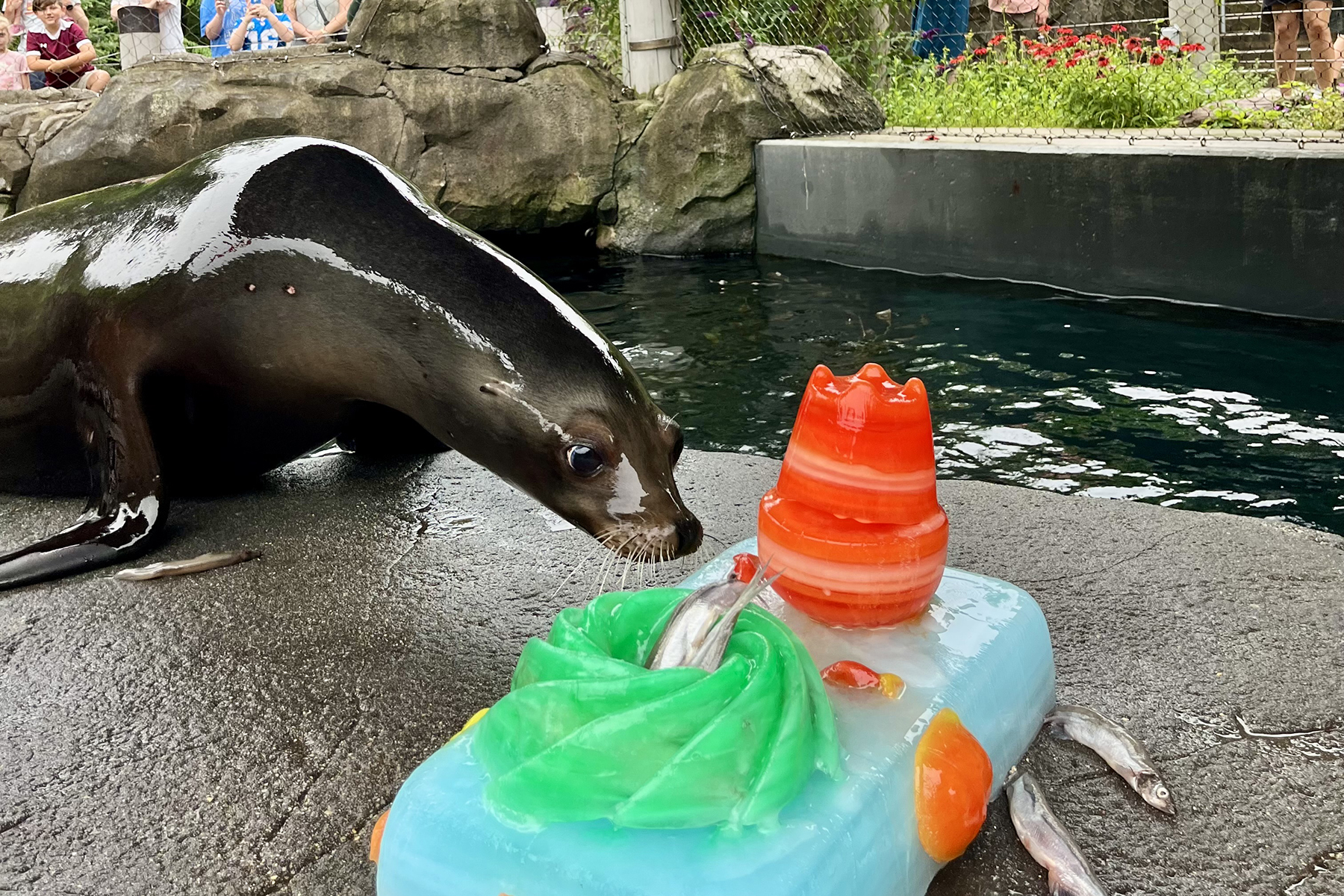
A sea lion enjoys a frozen birthday "cake" decorated with capelin, squid, butterfish, mackerel and herring at American Trail. Credit: Erin Whatley/Smithsonian
“In celebration of animal birthdays and other important milestones, our commissary team pivots from preparing diets and harvesting browse (leafy branches) to creating ice cakes! Tailored to the tastes of each species and individual animal, our commissary keepers work diligently to ensure each masterpiece fits the recipient’s nutritional requirements and is fun and enriching for them. These cakes showcase our staff’s dedication, creativity and commitment to the animals. This year, we’ve provided 22 ice cakes for the Zoo’s animals—and counting!”—Bill Clements, Commissary Manager
Primates
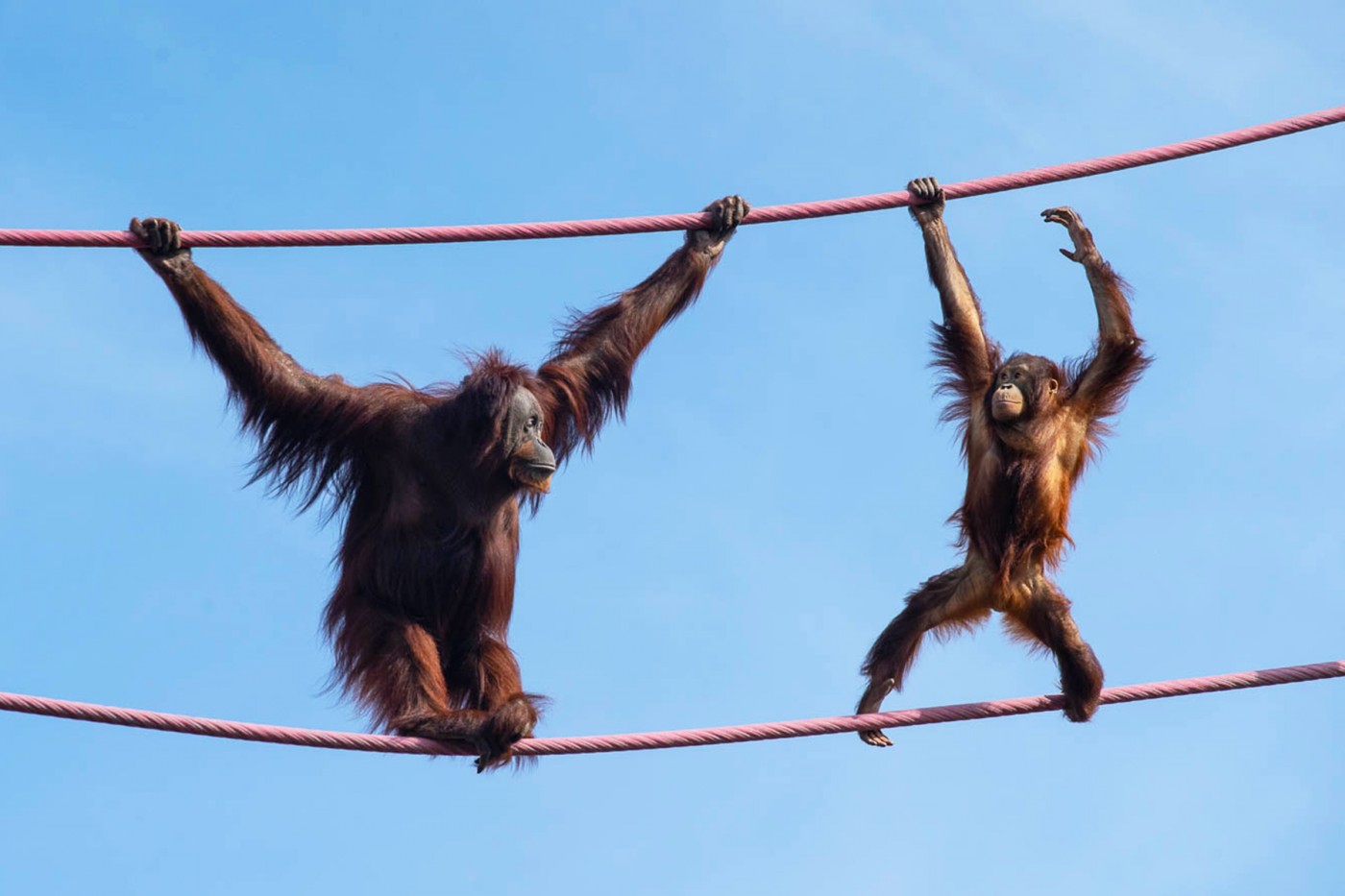
Orangutans Bonnie (left) and Redd on the O-Line. Credit: Skip Brown/Smithsonian
“Following Kyle orangutan’s sudden passing from chronic respiratory disease in January, the Primate team moved quickly to create some new social groups that ensured all orangutans had opportunities to socialize and provided maximum flexibility for the animals. This required countless hours of observations from the team. The professionalism and expertise of the staff allowed us to successfully introduce individuals who had not lived together in over 15 years.
“At the same time, our team successfully accommodated a huge construction project to replace all of the hydraulic doors in both the Great Ape House and the Think Tank buildings. What is so impressive about this project is that the work had to be completed without moving any of the animals out of their exhibits.
“The task required an incredible amount of planning, communication, and coordination with the door contractors. The staff evaluated animal behavior closely throughout the project, made adjustments as necessary, and the animals now have a safer habitats to reside in as a result!” – Becky Malinsky, Curator of Primates
Reptile Discover Center
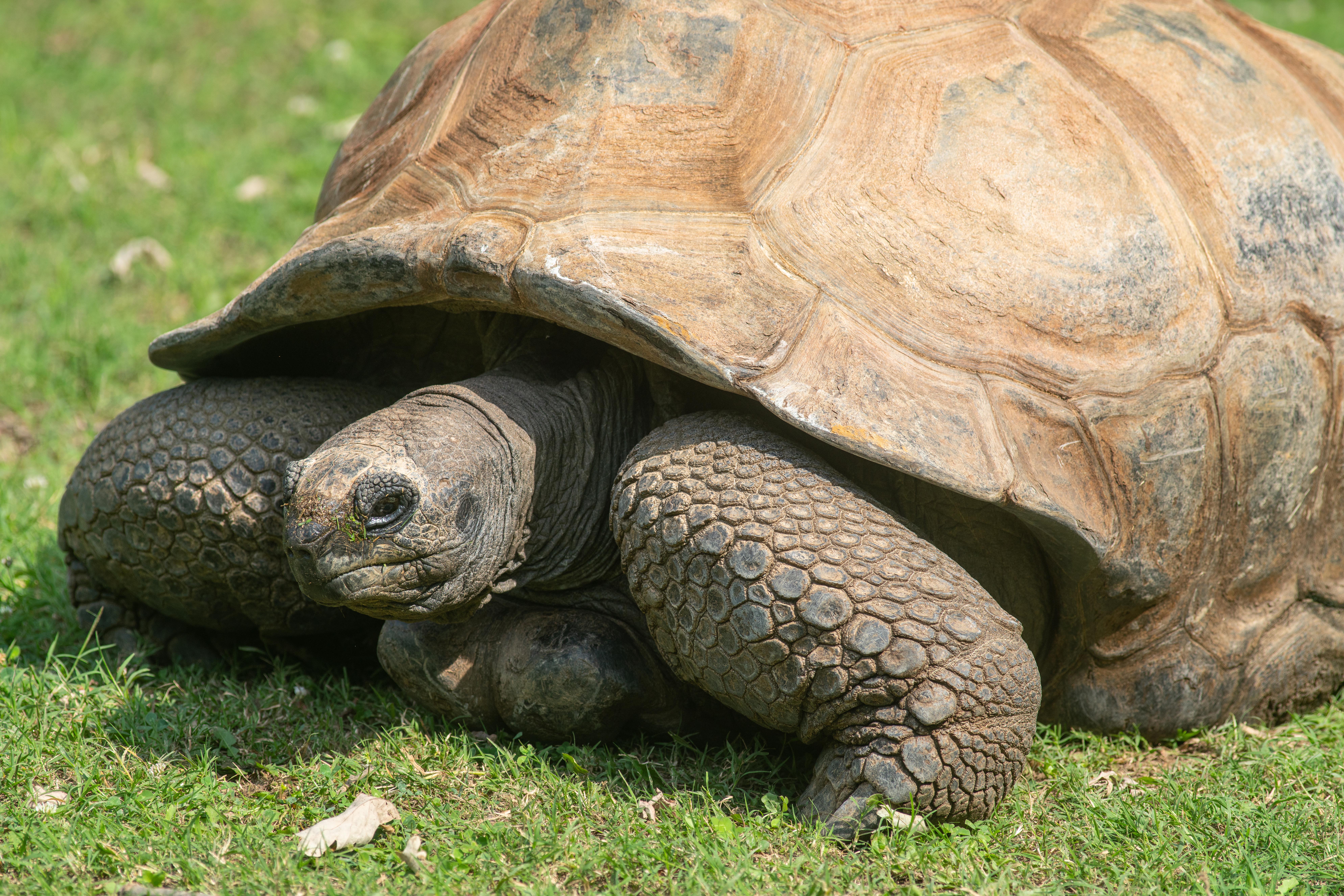
An Aldabra tortoise grazes in its outdoor habitat. Credit: Skip Brown/Smithsonian
“When Africa Trail closed for renovation, keeper Nick Schiraldi joined the Reptile Discovery Center team. Instead of caring for large mammals like cheetahs and addax, Nick is tasked with caring for herps big and small—from our giant Aldabra tortoises to our tiny lemur leaf frogs.
“Daily animal checks are a bit different for amphibians and reptiles, which have evolved to blend perfectly into their environments. Just spotting them can be a challenge! Keeping these animals healthy, enriched and fed requires remarkable attention to detail. For amphibians, especially, keepers are required to understand how our water filtration systems work and how to measure and maintain water quality—no easy task!
“Nick has adjusted very quickly and routinely steps up to support his fellow keepers. His willingness to help without hesitation is a huge help to us!” – Matt Evans, Assistant Curator of Reptile Discovery Center
Small Mammal House
“Animal shipments are imperative to sustain zoo populations. They enable us to set up new breeding pairs and create appropriate social groupings for our residents. The Small Mammal House averages over 20 animal shipments per year, and the keepers are integral to that process. They train animals to be comfortable with their crates for shipment. They fill out pre-shipment paperwork so that they receiving zoo know all about the animal’s health, temperament and more (including favorite enrichment and treats!). They facilitate airport pickups and drop-offs, and on occasion, longer drives to transport animals. The Small Mammal House team’s efforts ensure that our animals receive excellent care here, experience smooth and safe travel between zoos, and have opportunities to contribute to their species’ survival.” —Kenton Kerns, Curator of Kids’ Farm and Small Mammal House
Smithsonian Conservation Biology Institute
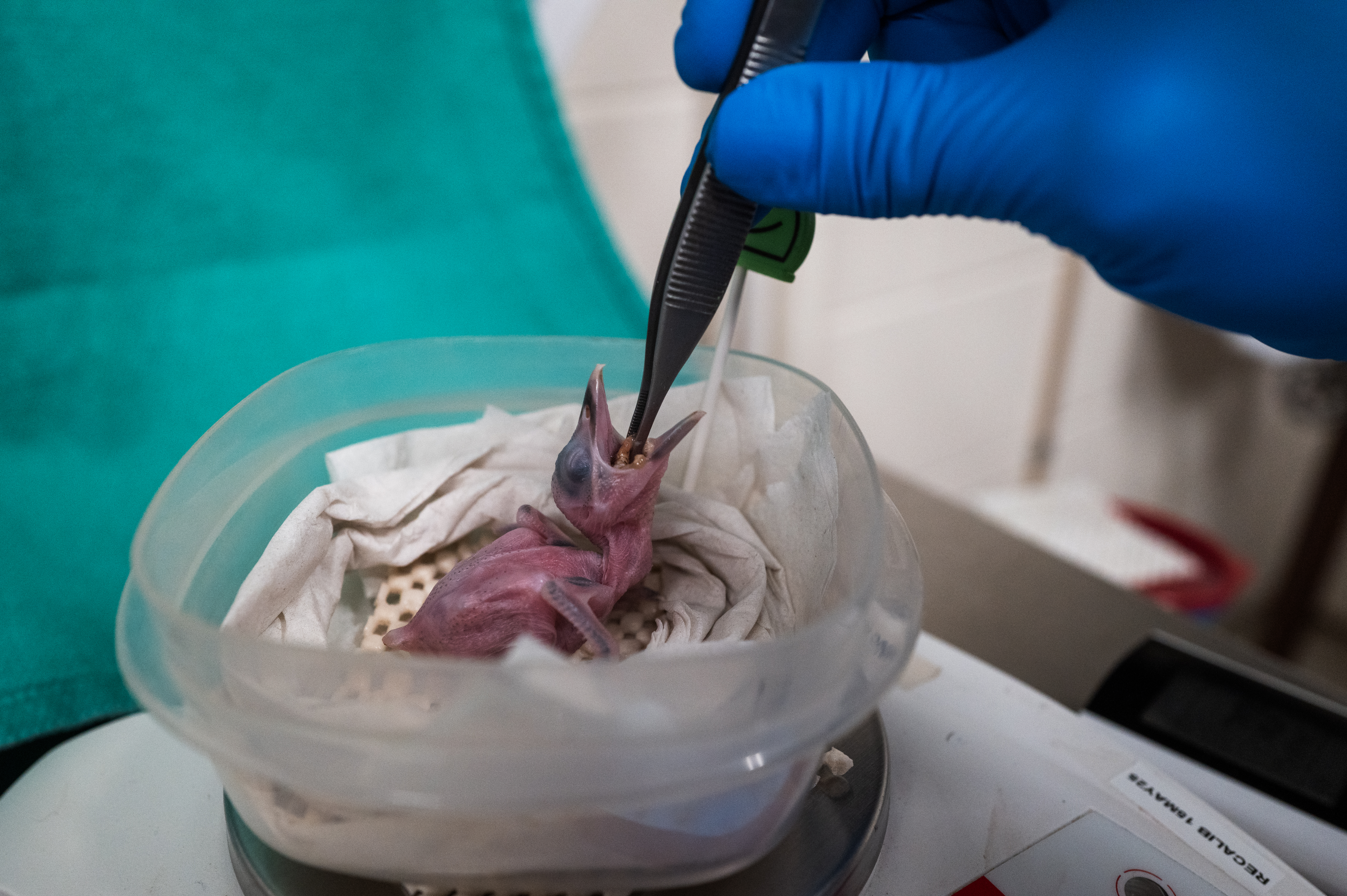
Bird keeper Erica Royer feeds a newly hatched sihek chick. Credit: Roshan Patel/Smithsonian
"Erica Royer, a bird keeper at the Smithsonian’s National Zoo and Conservation Biology Institute’s Front Royal campus, plays a pivotal role in the conservation of critically endangered bird species. Notably, she has led successful breeding and hand-rearing efforts for the Guam sihek (kingfisher) and Guam ko’ko (rail), two species that are incredibly rare in the wild. She wrote the protocols for translocation, hand-rearing, and release, ensuring consistency and excellence across institutions.
“Sihek are notoriously difficult to breed, and the Species Survival Plan population is in dire need of more chicks to maintain genetic diversity and provide chicks for reintroduction. This year, Erica paired two sihek breeding pairs, artificially incubated eggs and hand-raised two chicks.
“Successful breeding and chick rearing requires an enormous amount of work, habitat alterations, managing male aggression, both direct observations and reviewing of remote cameras, incubator checks and modifications, and regular daytime and after-hours feedings of the chicks. Erica went above and beyond to safely give these adult birds the best opportunities to breed and for both chicks to thrive. She paid meticulous attention to the behavioral and physiological needs of the birds under her care. Her expertise, passion and strong work ethic were integral to the survival of the rarest bird species in the Zoo’s collection.
“In addition to her exceptional leadership and work here, Erica has also continued her pivotal role advising other facilities in all aspects of sihek breeding, pairing, incubation and hand rearing. Her leadership in developing and implementing species-specific protocols has addressed complex challenges in avian husbandry. Her commitment to the welfare of these species, combined with her collaborative efforts with various conservation organizations, underscores her dedication to advancing animal care standards in the field of aviculture."—Tara Buk and Chris Crowe, animal keepers
“In September 2024, maned wolf Bravo suffered gastrointestinal torsion, a life-threatening condition that may lead to death in just a few hours. Carnivore keepers at the Zoo’s Front Royal, Virginia campus quickly identified the problem, and Bravo underwent emergency surgery.
“Not only did the veterinary team and keepers support Bravo through his recovery, but Team Carnivore ensured that Bravo was safely reintroduced to female wolf Terra in time for breeding in October. The odds were stacked against the pairing – at 11 years old, Bravo would be one of the oldest maned wolves to ever breed, and Terra was a potential first-time mom. Despite the enormous challenges, a successful pregnancy resulted!
“The maned wolf population in the Association of Zoos and Aquariums has struggled, and births are rare. Surviving pups are even rarer. Of four pups born at the Zoo during the 2024 season, only three survived. Two of these are Bravo’s daughters, Alandra and Ayla. Bravo represents a rare family line in the Species Survival Plan, and adding representation of this family is critical to maintaining important gene diversity in the AZA population.
“From a possibly life-ending illness to a growing family, Bravo’s care team has ensured his recovery and success. Enormous kudos to animal keepers Marissa Gonzalez, Jessica Kordell, Amber Dedrick, Becky Merritt, Josh Hiserman, Mackenzie Perry and Stacey Spillman; Curator of Carnivores Adrienne Crosier; veterinarian Dr. Kristi Delaski, and veterinary technicians Julia Jones and Lisa Ware.”—Colleen Lynch, Senior Curator
"At the Smithsonian's conservation campus in Front Royal, Virginia, ungulate keepers care for five hoofstock species, all of which are either classified by the IUCN as endangered or vulnerable. The animals in these herds are assurance populations to ensure the genetic diversity of their respective species, and in the case of the Przewalski's horse and the scimitar-horned oryx, part of research efforts that support active, successful reintroduction programs.
"As a result, every birth by one of these animals is a significant event. This year, the ungulate team welcomed four foals: one Przewalski's horse colt, one Hartmann's zebra filly and two Persian onager colts. Keepers spent months preparing for ungulate pregnancies and births, including monitoring behaviors, training animals for voluntary health care, and tracking the new foals for the important milestones, such as standing, nursing and bonding, both between mothers and their foals, as well as between the foals and the rest of the herd.
"Additionally, keepers suffered a loss when Hartmann's zebra Mackenzie delivered a stillborn foal earlier this year. The loss of any animal is difficult for the team, especially when they have devoted so much time and energy into the care of the mother and baby-to-be. Although visitors won't see these animals at the Zoo, the ungulate team works tirelessly to ensure the best possible outcomes for them. An enormous thank you to my fellow ungulate keepers Rel Harwood, Bethany Koruschak, Michelle Janota and Sean Engel for their dedication to the survival of these amazing species."—Tara Buk, animal keeper.